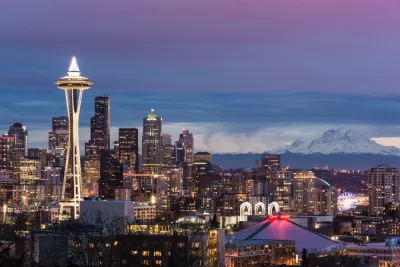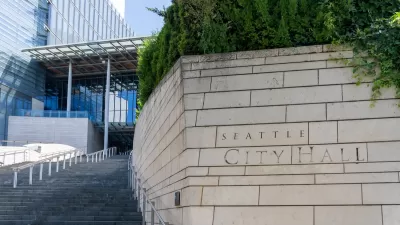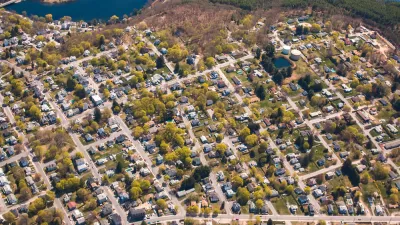Zoned capacity is often as a statistic to support anti-development arguments. One write endeavors to thoroughly debunk the idea that Seattle has enough zoned capacity to meet its growing demand for housing.

Dan Bertolet writes in response to claims that Seattle has plenty of zoned capacity for new housing.
The Seattle Times editorial board argued the idea that the city is already zoned to capacity earlier in September, but as Bartolet acknowledges, the daily newspaper is far from a solitary voice on the issue. In fact, writes Bartolet, "'We have plenty of zoned capacity' is repeated credulously and earnestly by citizen activists and homeowners at city council meetings and community forums and in online debates (see here, here, here, here, here, here, here, here, here, here)."
Bartolet sets out to debunk this myth, as he describes it, perpetuated by faulty methodology for estimating zoned capacity, which he argues is "exceedingly difficult to estimate correctly and is employed by planners only as a crude yardstick." One limitation of zoned capacity is its failure to measure other real world obstacles to housing construction.
The most important point about zoned capacity, writes Bartolet, is that "in every city, zoned capacity is a side show to the main event. The main event is housing prices." [Emphasis from the original.]
Housing prices are the crux of the matter. They reveal if people have enough housing choices. If vacancy rates are low and rents and housing prices are rising, then a city needs more homes. Period. The city needs to remove zoning-code barriers to more housing, so that builders can construct more homes. Compared with the evidence of the actual housing market, zoned capacity is just fuzzy math.
Bartolet goes into a lot more detail in his effort to debunk zoned capacity, especially as it relates to housing and zoning in Seattle. Since Bartolet wrote this polemic, the city of Seattle released proposed zoning maps that would increase density in downtown and transit adjacent areas around the city.
FULL STORY: NO, SEATTLE DOES NOT ALREADY HAVE “PLENTY” OF LAND ZONED FOR NEW HOUSING

Maui's Vacation Rental Debate Turns Ugly
Verbal attacks, misinformation campaigns and fistfights plague a high-stakes debate to convert thousands of vacation rentals into long-term housing.

Planetizen Federal Action Tracker
A weekly monitor of how Trump’s orders and actions are impacting planners and planning in America.

In Urban Planning, AI Prompting Could be the New Design Thinking
Creativity has long been key to great urban design. What if we see AI as our new creative partner?

Cal Fire Chatbot Fails to Answer Basic Questions
An AI chatbot designed to provide information about wildfires can’t answer questions about evacuation orders, among other problems.

What Happens if Trump Kills Section 8?
The Trump admin aims to slash federal rental aid by nearly half and shift distribution to states. Experts warn this could spike homelessness and destabilize communities nationwide.

Sean Duffy Targets Rainbow Crosswalks in Road Safety Efforts
Despite evidence that colorful crosswalks actually improve intersection safety — and the lack of almost any crosswalks at all on the nation’s most dangerous arterial roads — U.S. Transportation Secretary Duffy is calling on states to remove them.
Urban Design for Planners 1: Software Tools
This six-course series explores essential urban design concepts using open source software and equips planners with the tools they need to participate fully in the urban design process.
Planning for Universal Design
Learn the tools for implementing Universal Design in planning regulations.
Appalachian Highlands Housing Partners
Gallatin County Department of Planning & Community Development
Heyer Gruel & Associates PA
Mpact (founded as Rail~Volution)
City of Camden Redevelopment Agency
City of Astoria
City of Portland
City of Laramie





























